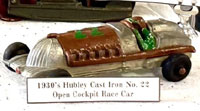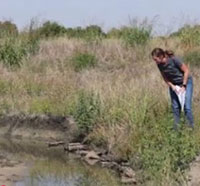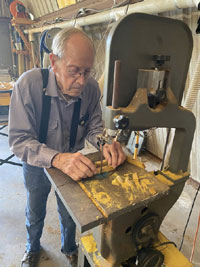
-
The Fannin County Museum of History invites the public to enjoy this wonderful exhibit of cast-iron toys.
-
Historic Fannin County newspapers often featured beautiful front pages for their Christmas editions. An exhibit of these newspapers is now on display on the 2nd Floor of the Fannin County Courthouse. Visit the courthouse during this season to view this display and beautiful decorations.
-
Sam Howard owned Bonham Wholesale Grocery. He commissioned a memorial to the Fannin County men who were in the Spanish-American War and had it placed on the building in 1898. Bonham Wholesale Grocery burned. In 1976 the memorial was moved to the Courthouse lawn. Today it sits on the northwest corner of the Courthouse lawn.
-
So you think you've heard all the JFK assassination conspiracy theories, huh? Was it the Cubans, the Russians, J. Edgar Hoover, the military-industrial complex...
-
As part of #LakeRalphHall construction, Upper Trinity built four new stream channels totaling nearly six miles to restore natural water flow, stabilize stream banks, and reduce erosion. Check out our newest video and see how this project is giving nature a second chance.
-
On a sunny North Texas day, three members of the Creative Arts Center—Director Sandy Barber, Program Coordinator Japhnee “Jaye” Metellus, and Board Member Caroline Blackwell—set out on a two-part field trip that combined artistry, history, and local pride. Their destination? The family homestead of local artisan and woodworking expert David Keene.
-
A big bicycle event, Autumn in Bonham, took place in Fannin County on Saturday. You may not know how popular bicycles were in the late 1800s. Bicycling became very popular in Honey Grove beginning in about 1893, as witnessed by articles and advertisements from the Honey Grove Signal.
-
Cars 25 years old or older are preferred in the Annual Bug Tussle Trek, making this is an opportunity to appreciate American-made muscle cars of the '60s and '70s, 12-cylinder roadsters built in the United Kingdom, a variety of Mercedes-Benz entries, and an assortment of historical vehicles as they tour the backroads of Texas.
-
Honey Grove was the place to be Saturday as a city known as "The Sweetest Town in Texas" celebrated the 31st Annual Davy Crockett Day with a full day of entertainment, including a car show, vendors and festival food.
-
The State Fair takes place in Dallas this year from September 26 - October 19. Many residents of Fannin County attend the Fair every year and enjoy it very much.
-
Members of the T.V. Munson family receive a plaque from Dr. Amit Dhingra (wearing a straw hat). The Texas A&M College of Agriculture and Life Sciences Department of Horticultural Sciences opened its 2025 Spirited Learning fall series by celebrating the lasting legacy of T.V. Munson, a 19th century Texas scientist whose breakthroughs still safeguard wine production worldwide. Ben Munson IV, of Denison, representing the Munson family as T.V. Munson’s grandnephew, said the recognition of T.V. Munson’s significance in the history of Texas and global horticulture is indicative of the department’s commitment to meet challenges with innovative and practical science-based solutions.
-
As a postcard collector, there are many special cards in my collection, but this is the one I treasure. It’s a very personal card from a specific time and place and I was in the right spot to be able to find our writer and his friend.
-
You have probably driven under this underpass many times, but I doubt you know this history. Thanks to the folks at the TxDOT for bringing this historic structure to our attention.
-
In 1927 a levee district was created to finance a reclamation project for Bois d’Arc Creek. Adjacent landowners were taxed to finance the work. Bonds were issued for $188,000 for the work. The reclamation project for Bois d’Arc for about 14 miles up and down the creek, south and northeast from Bonham, took place in 1928. In May 1928 a "modern ditcher," "a machine of wonderful power," was unloaded from the DB & NO Railway in Bonham and was soon put to work. It was a great undertaking. photos courtesy of Bonham Daily Favorite
-
Fay (Mule) Wilson (1901-1937) was the most famous football player from Honey Grove. After his high school career, he attended Texas A&M University and was a captain of the football team and also lettered in track. After his time in college, he played professional football for the Buffalo Rangers and then for the New York Giants, playing on the 1927 NFL Championship team.

